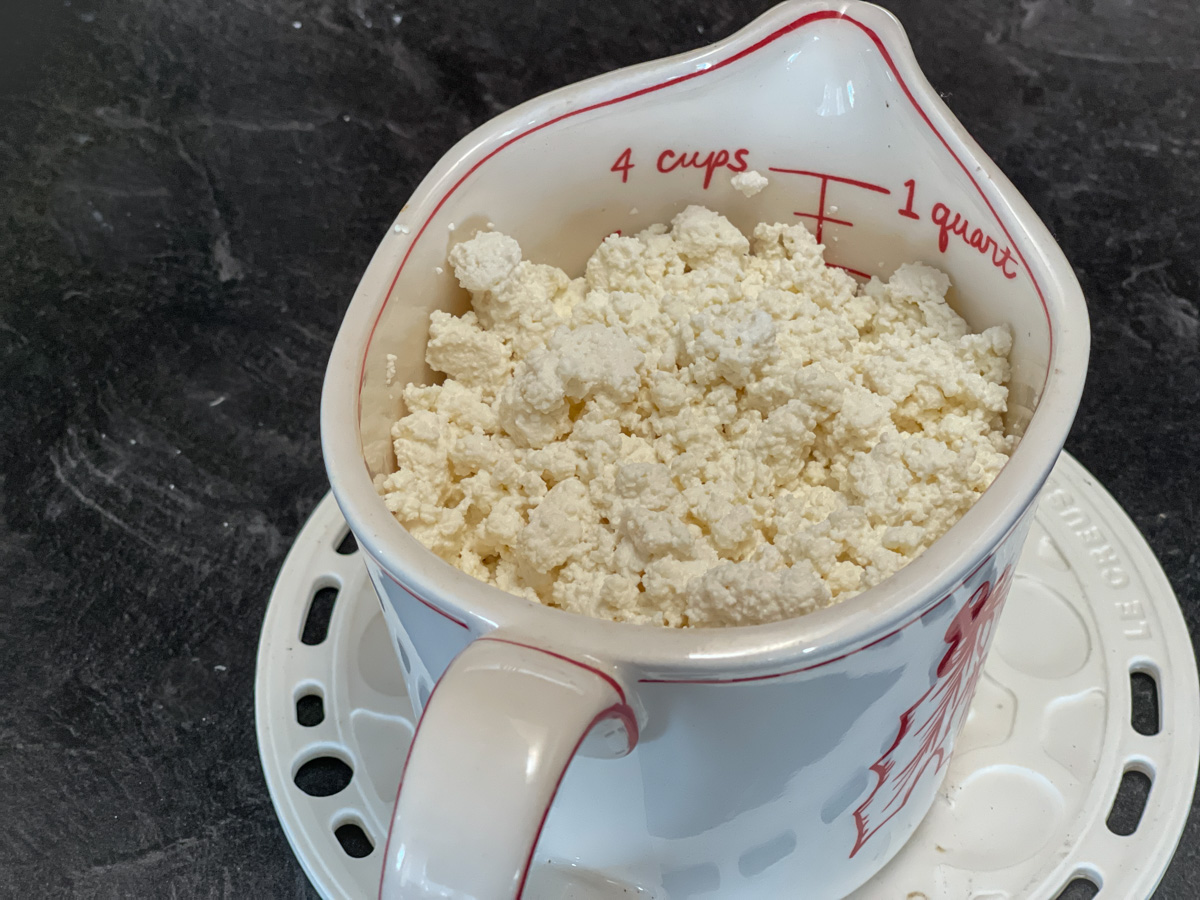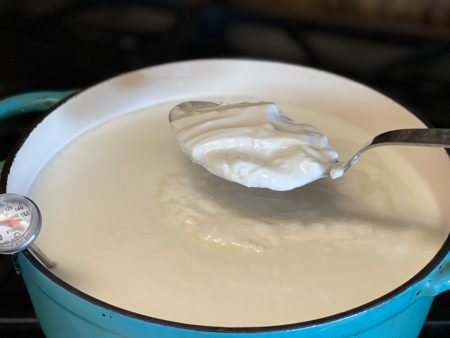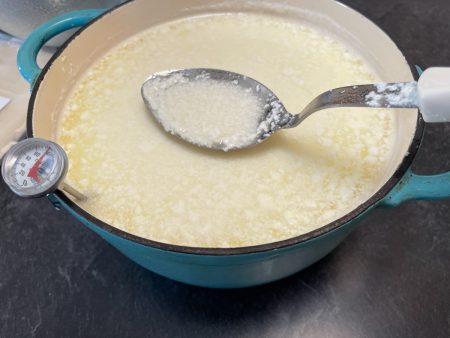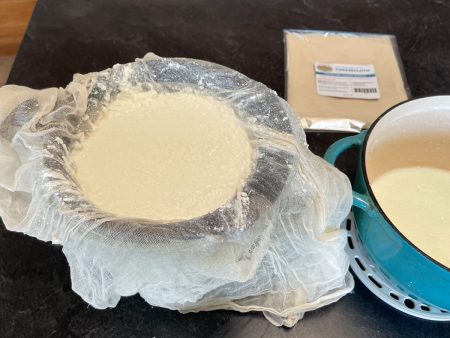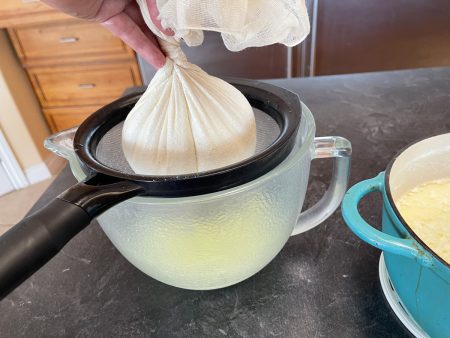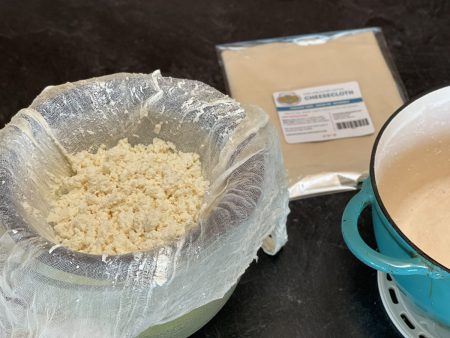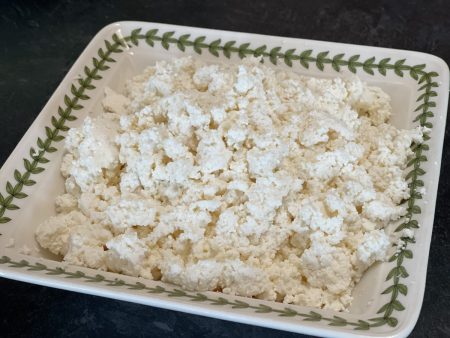Cottage Cheese — Yogurt Plus
Watch The Video
Equipment
- 5+ quart pot
Ingredients
- 1½ cup Yogurt Plus – that has been previously made
- 1 gallon milk – pasteurized (not ultra-pasteurized) whole milk or 2% or even raw milk will work too
- ¼ teaspoon Celtic Sea Salt – optional
Every ingredient with a link was selected by me to make it easier for you. I may receive a small affiliate commission if you buy something through my links. Thank you! ❤️
Instructions
- After 24 hours or when you see a thick curd has formed, bring the pot to 100°F. Do it ever so slowly over low heat (about a degree every minute – 15-20 minutes), stirring every few minutes to break up the curds on the bottom of the pan so they won’t burn. You will know it’s done when the whey separates from the curd and you see soft fluffy curds floating. The whey is a clear yellowish liquid. If you are not seeing any whey you can take it to 102-103 F° and hold it for a minute or two until you see a little whey in the mixture and clouds of white.
- Line a strainer with butter muslin (cheesecloth). Place the strainer over a bowl. Pour the mixture from the pot into the strainer a little at a time. I did this in two batches with the mixture, each time squeezing out the liquid (see next step) and removing the curds. Then I did it again till all the liquid was removed.


